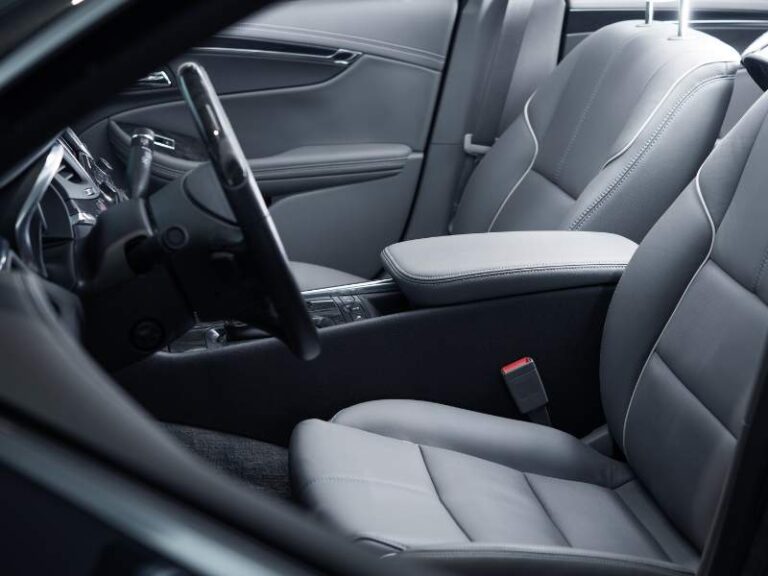What is the Downside of Leather Car Seats?
The downside of leather car seats is that they can be expensive and require regular maintenance to prevent cracking and fading. Leather car seats come with a high price tag and often need to be cleaned and conditioned to maintain their appearance and longevity.
Additionally, leather seats can become uncomfortable in hot weather, as they tend to absorb and retain heat, making them hot to the touch. However, many people still prefer leather car seats for their luxurious look and feel, even with these drawbacks.
Leather Longevity Issues
| Leather Longevity Issues | |
|---|---|
| Susceptibility to Cracking and Wear | Vulnerability to UV Damage |
|
Leather car seats, while luxurious and aesthetically pleasing, can pose some downsides. One of the main issues is their susceptibility to cracking and wear. Over time, the leather can develop small cracks, especially in areas of frequent contact and movement. These cracks can compromise the overall durability and appearance of the seats. Additionally, the constant friction caused by entering and exiting the car can lead to visible signs of wear, further diminishing the lifespan of the leather seats. |
Another downside of leather car seats is their vulnerability to UV damage. Prolonged exposure to sunlight and UV rays can cause the leather to fade, lose its color, and become brittle. This not only affects the visual appeal of the seats but also weakens the material, making it more prone to tearing and cracking. Car owners who regularly park their vehicles in direct sunlight should be particularly cautious about protecting their leather seats from UV damage by using seat covers or window shades. |
Comfort Concerns With Leather Seats
Leather car seats may have a few downsides when it comes to comfort. One concern is the seasonal temperature extremes. Leather seats tend to become extremely hot during summer months, making them uncomfortable to sit on. Similarly, during winter, they can feel cold and take longer to warm up compared to other materials. These temperature fluctuations can affect the overall comfort levels in the car.
Another drawback is the limited breathability and comfort. Leather is not as breathable as other materials, which can cause sweat to build up and result in a sticky and uncomfortable feeling, especially during longer drives. Additionally, leather seats often require a break-in period to soften and become more comfortable. Initially, they may feel stiff and rigid, which can reduce the immediate comfort offered by the seats.
Leather’s Impact On Health And Environment
Leather car seats have their downsides, especially when it comes to their impact on health and the environment. One potential downside is the potential for allergic reactions. Leather is treated with chemicals during the tanning process, which can lead to skin irritations and allergies in some individuals. Moreover, the production of leather has significant ecological footprints. The process involves the use of heavy metals, such as chromium, which can contaminate the soil and waterways, leading to environmental pollution.
Additionally, the ethical considerations regarding the use of animals for leather production should be taken into account. This industry often involves the slaughter of animals, raising concerns for animal welfare. Considering the potential health risks and environmental implications, it is crucial to weigh the downsides of leather car seats before making a decision.
Practical Setbacks Of Leather Upholstery
Leather car seats definitely have their appeal with their luxurious appearance and premium feel. However, there are some downsides to consider. One major drawback is the cost comparison with cloth seats. Leather seats tend to be more expensive to install and maintain compared to their cloth counterparts.
Another drawback is the challenge of stain removal and leather sensitivities. While leather seats are known for their durability, they are more prone to showing stains and require specialized cleaning methods. Additionally, leather upholstery may be less forgiving for those who have sensitivities or allergies.
Furthermore, limitations in style and customization options can be a setback for some. Unlike cloth seats that come in a wide range of colors and patterns, leather seats offer fewer options for customization. This can be limiting for those who want to personalize their vehicle’s interior.
Safety And Leather Seat Drawbacks
Leather car seats have their downside when it comes to safety. One major concern is the slippery surface that can pose safety risks to occupants. The smooth texture of leather can make it easy for passengers to slide and lose their balance, especially when the car is in motion or during abrupt stops. This might lead to injuries, particularly if the car experiences sudden acceleration or deceleration.
Another safety concern is related to airbag deployment. Leather seats might interfere with the proper functioning of airbags, affecting their efficiency in protecting passengers during collisions. Due to the rigidity and thickness of leather, it may create a barrier that prevents the airbag from fully deploying, thereby reducing its effectiveness in minimizing injuries in an accident.
The effectiveness of seat heaters is also impacted by leather car seats. Leather is less porous and takes longer to conduct heat than other materials, which can result in delayed or uneven warming. Therefore, occupants may not experience the desired level of comfort or warmth when using seat heaters with leather seats.
Hidden Drawbacks Unveiled For Car Buyers
Resale Value Misconceptions: One of the lesser-known downsides of leather car seats is how they can impact the resale value of a vehicle. While many car buyers perceive leather seats as a desirable feature that adds value, the reality is not always the same. In certain cases, potential buyers may actually prefer cloth seats due to personal preferences or practicality, leading to a lower demand for vehicles with leather interiors.
Insurance and Leather Interior Premiums: Another important consideration when it comes to leather car seats is the potential impact on insurance premiums. Some insurance companies may charge higher rates for cars with leather interiors, as these seats can be more expensive to repair or replace in the event of damage. Prospective car buyers should factor in these increased costs when deciding whether or not to choose leather seats.
Market Trends Influencing Leather Choices: The popularity of leather car seats may vary depending on market trends. In recent years, there has been a growing demand for eco-friendly and cruelty-free materials, leading to an increased preference for alternative seat materials such as synthetic leather or fabric. Car buyers should consider these changing consumer preferences when making decisions about interior seat options.
Frequently Asked Questions Of What Is The Downside Of Leather Car Seats?
What Are The Disadvantages Of Leather Car Seats?
Leather car seats can be expensive and require regular maintenance to keep them in good condition. They can also become hot in the summer and cold in the winter, which can make them uncomfortable to sit on. Additionally, leather seats may not be as durable as other types of upholstery and can be prone to scratching and tearing.
Conclusion
While leather car seats may offer a luxurious and sleek aesthetic, they do come with their downsides. The high cost, susceptibility to damage, and discomfort in extreme weather conditions are all factors to consider. Additionally, the environmental impact of leather production raises concerns for eco-conscious individuals.
Nevertheless, with proper care and consideration of alternatives, you can make an informed decision that suits your needs and preferences. Keep in mind the pros and cons before deciding on your next car seat upholstery.
- Can I Get in a Taxi Without a Car Seat? - January 26, 2025
- Can I Get Chlamydia From a Toilet Seat? - January 26, 2025
- Can I Get an Uber With a Car Seat? - January 26, 2025






